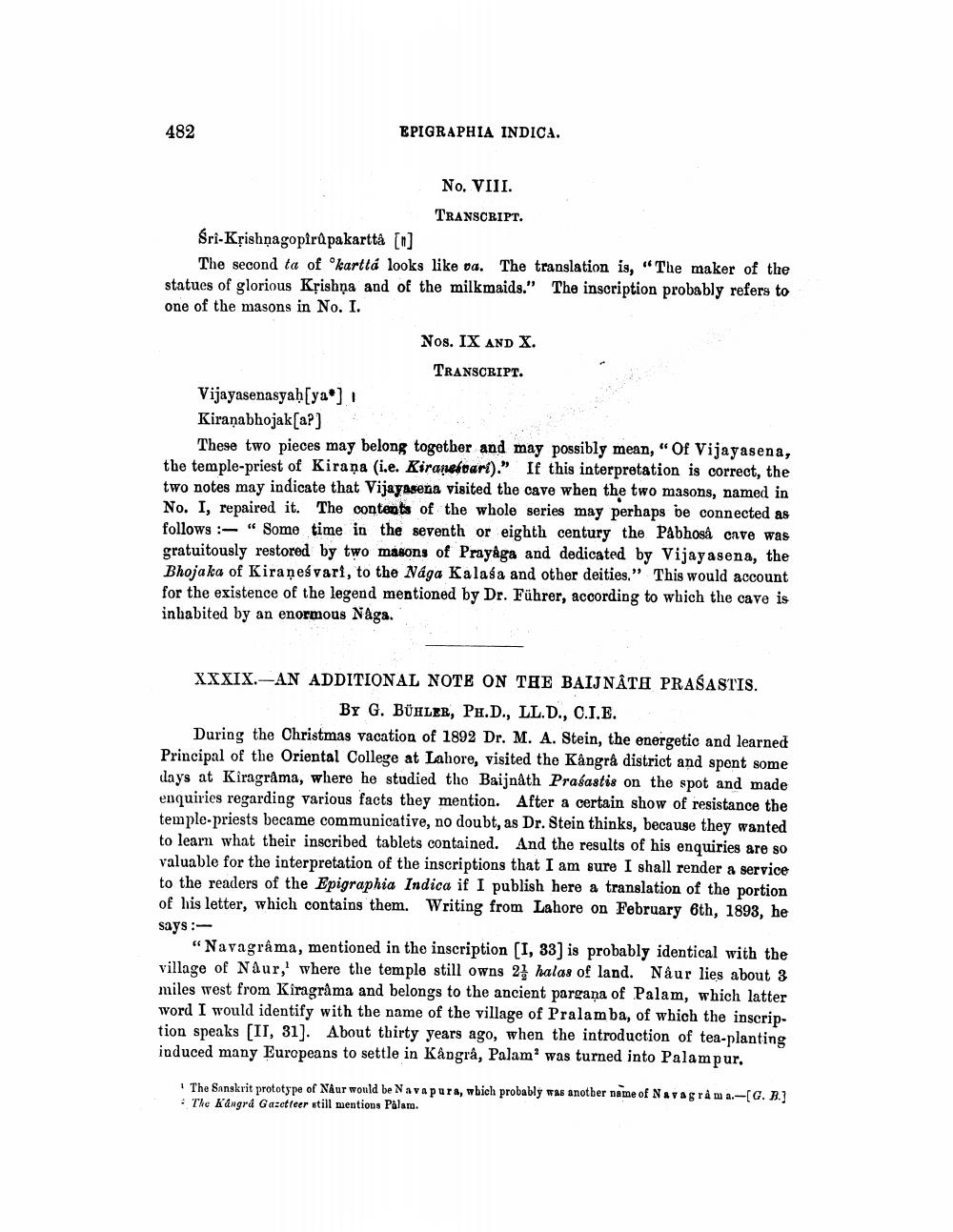________________
482
EPIGRAPHIA INDICA.
No. VIII.
TRANSCRIPT. Sri-Krishnagopirů pakartta [v]
The second ta of karttá looks like oa. The translation is, "The maker of the statues of glorious Krishna and of the milkmaids." The inscription probably refers to one of the masons in No. I.
Nos. IX AND X.
TRANSCRIPT. Vijayasenasyahsya) Kiraṇabhojak[a?]
These two pieces may belong together and may possibly mean, "Of Vijayasena, the temple-priest of Kirana (i.e. Kiraneštart)." If this interpretation is correct, the two notes may indicate that Vijayaseva visited the cave when the two masons, named in No. I, repaired it. The contents of the whole series may perhaps be connected as follows:- " Some time in the seventh or eighth century the Pabhosà cave was gratuitously restored by two masons of Prayaga and dedicated by Vijayasena, the Bhojaka of Kiranešvari, to the Naga Kalasa and other deities." This would account for the existence of the legend mentioned by Dr. Führer, according to which the cave is inhabited by an enormous Naga.
XXXIX.-AN ADDITIONAL NOTE ON THE BAIJNÂTA PRAŠASTIS.
By G. BÜHLER, PH.D., LL.D., C.I.E. During the Christmas vacation of 1892 Dr. M. A. Stein, the energetic and learned Principal of the Oriental College at Lahore, visited the Kangra district and spent some days at Kiragrama, where he studied tho Baijnath Prasastis on the spot and made enquiries regarding various facts they mention. After a certain show of resistance the temple-priests became communicative, no doubt, as Dr. Stein thinks, because they wanted to learn what their inscribed tablets contained. And the results of his enquiries are so valuable for the interpretation of the inscriptions that I am sure I shall render a service to the readers of the Epigraphia Indica if I publish here a translation of the portion of his letter, which contains them. Writing from Lahore on February 6th, 1893, he says:
"Navagrama, mentioned in the inscription (I, 33) is probably identical with the village of Naur,' where the temple still owns 21 halas of land. Nåur lies about 3 miles west from Kiragrama and belongs to the ancient pargana of Palam, which latter word I would identify with the name of the village of Pralamba, of which the inscription speaks (IT, 31). About thirty years ago, when the introduction of tea-planting induced many Europeans to settle in Kångra, Palam' was turned into Palampur,
The Sanskrit prototype of Naur would be Navapura, which probably was another name of Navagrama.-C.B.] • The Kangrå Gazetteer still mentious Palam.




